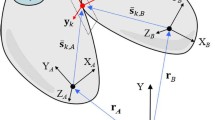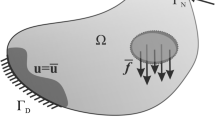Abstract
The Center for Simulating Dynamic Response of Materials at the California Institute of Technology is constructing a virtual shock physics facility for studying the response of various target materials to very strong shocks. The Virtual Test Facility (VTF) is an end-to-end, fully three-dimensional simulation of the detonation of high explosives (HE), shock wave propagation, solid material response to pressure loading, and compressible turbulence. The VTF largely consists of a parallel fluid solver and a parallel solid mechanics package that are coupled together by the exchange of boundary data. The Eulerian fluid code and Lagrangian solid mechanics model interact via a novel approach based on level sets. The two main computational packages are integrated through the use of Pyre, a problem solving environment written in the Python scripting language. Pyre allows application developers to interchange various computational models and solver packages without recompiling code, and it provides standardized access to several data visualization engines and data input mechanisms. In this paper, we outline the main components of the VTF, discuss their integration via Pyre, and describe some recent accomplishments in large-scale simulation using the VTF.
Similar content being viewed by others
References
R. E. Cohen and O. Gülseren. Thermal equation of state of tantalum. http://arxiv.org/ps/condmat/0006213, 2000.
A. M. Cuitino, L. Stainier, G. Wang, A. Strachan, T. Cagin, W. A. Goddard III, and M. Ortiz. A multiscale approach for modeling crystalline solids. Journal of Computer Aided Material Design, submitted for publication, 2001.
P. Glaister. An approximate linearised Riemann solver for the Euler equations for real gases. Journal of Computational Physics, 74:382–408, 1988.
S. K. Godunov. A finite difference method for the computation of discontinuous solutions to the equations of fluid dynamics. Mat. Sb., 47:271–306, 1959.
A. Lew, R. Radovitzky, and M. Ortiz. An artificial-viscosity method for the lagrangian analysis of shocks in solids with strength on unstructured, arbitrary-order tetrahedral meshes. Journal of Computer Aided Material Design, submitted for publication, 2001.
E. Morano, M. Arienti, P. Hung, and J. Shepherd. A Level Set Approach to Eulerian-Lagrangian Coupling. In preparation.
M. Parashar and J. C. Browne. Dagh: A data-management infrastructure for parallel adaptive mesh-refinement techniques. Technical report. Rutgers University, 1999. http://www.caip.rutgers.edu/ parashar/TASSL/Projects-/GrACE/Gmain.html.
D. I. Pullin. Direct simulation methods for compressible ideal gas flow. Journal of Computational Physics, 34:231–244, 1980.
R. Samtaney and D. I. Meiron. Hypervelocity Richtmyer-Meshkov instability. Phys. Fluids, 9(6):1783–1803, 1997.
R. Samtaney and N. J. Zabusky. Circulation deposition on shock-accelerated planar and curved density-stratified interfaces: Models and scaling laws. Journal of Fluid Mech., 269:45–78, 1994.
B. Van Leer. Towards the ultimate conservative difference scheme IV: A new approach to numerical convection. Journal of Computational Physics, 23:276–299, 1977.
Author information
Authors and Affiliations
Rights and permissions
About this article
Cite this article
Cummings, J., Aivazis, M., Samtaney, R. et al. A Virtual Test Facility for the Simulation of Dynamic Response in Materials. The Journal of Supercomputing 23, 39–50 (2002). https://doi.org/10.1023/A:1015733102520
Issue Date:
DOI: https://doi.org/10.1023/A:1015733102520




